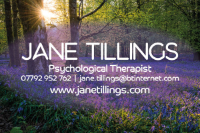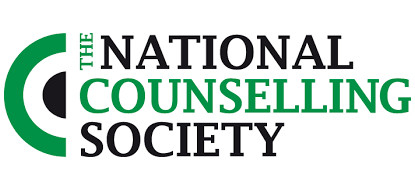By Bethany Bray
Fortunately, counselors also have an infinite supply of tools for forging therapeutic bonds, meeting clients’ needs and helping clients tell their stories.
Counselors need only flex their creative muscles to find approaches that can bolster trust with clients and speak to each person’s unique life experiences and worldview. Exploring a client’s interest in skydiving as a metaphor for self-awareness and trust? Discussing a favorite dish or recipe as a prompt to get a client talking about family-of-origin issues? Assigning a client to play video games online with peers as a first step toward addressing social anxiety? The sky’s the limit.
Counseling Today contacted several counselors who are using interesting, fresh or different approaches to help their clients and students. We hope that you will be inspired by their ideas and possibly use them as a jumping-off point to think outside the box in your own work.

Sparking connection with photos
As the adage goes, a picture is worth a thousand words.
American Counseling Association members Brandee Appling and Malti Tuttle believe the truth of this saying holds up even in counseling settings, especially in the age of smartphones, when photography is ubiquitous. Why not leverage that by asking clients to bring photos and images into sessions, they reasoned. Prompts such as “bring in an image that represents you feeling happy” or “bring in an image that represents your family” can be eye-opening for clients and clinicians alike, Appling and Tuttle say.
The duo, former school counselors who met while working as co-coordinators of the school counseling program at Auburn University, have found that “phototherapy” can encourage dialogue and boost empathy and connection in counseling. This can be especially true in group settings, with child and adolescent clients, and with individuals who struggle with speech or whose primary language is not the same as the counselor’s.
Photos and images introduce “another mode of communication” in counseling, says Tuttle, a licensed professional counselor (LPC) who is an assistant professor and school counseling program coordinator at Auburn.
“Photographs can bring insights into someone’s life that we might miss when talking — things that the client can’t verbally express or doesn’t think to,” adds Appling, an LPC and approved clinical supervisor who is now an assistant professor in the Department of Counseling and Human Development Services at the University of Georgia. “It helps to break down walls [in session] and makes it easier for the client to talk about something that’s concrete rather than [topics] that are in the air, so to speak.”
When Tuttle and Appling have used this approach in school settings, students have often been able to display photos on their cellphones. If students don’t have access to a cellphone, they may be able to check out digital cameras from the school, or the exercise can be widened to include printed images such as postcards or magazine clippings, the counselors say.
The counselor’s role is to prompt conversation by asking questions about the client’s image and then allowing the client to reflect and speak. The counselor should never try to interpret the image or impose their feelings about it, Appling stresses.
“This is not to be used to diagnose [clients]. This is not meant to be a stand-alone tool but part of a range of counseling tools,” Appling notes. “It’s one thing that we would use, but it’s not the only thing we would use. It should be part of the therapeutic process, one tool to use in an interrelated system.”
In group settings, an assignment to bring in an image that “represents you” can help participants get to know one another, build connection and create a sense of belonging, Tuttle says. Asking group members to explain why they chose their image can prompt meaning-making, empathy and recognition of others’ viewpoints and perspectives. It can also provide the group leader a glimpse into each group member’s personality and emotions.
The exercise “builds a sense of universality and connection with one another, [prompting] conversations that might not happen organically,” Tuttle adds.
She suggests spurring dialogue in sessions (whether individual or group) by asking open-ended questions such as:
- Why did you choose to bring this particular photo?
- What meaning does it hold for you?
- What would you title this photo, and why?
Appling has used this approach with a group she ran for students who were going through family transitions (e.g., divorce, a death in the family, living in foster care). When asked to share an image that represented the changes they were going through, one student brought in a photo they had taken of a unique seashell.
The seashell “was a representation, for them, of where they had been,” Appling recalls. “It looked very different than any other seashell that I had ever seen, and I initially didn’t recognize the image as a seashell. We talked about how water had changed it and eroded it. The seashell represented [the student] but also the growth and change they were experiencing.”
This intervention can also be flipped, with the counselor bringing in a photo for clients and students to discuss. When presenting on this intervention at conferences and trainings, Appling and Tuttle use an image of an aging set of concrete steps with vegetation growing through the cracks. They ask participants:
- What do you think this image means?
- What emotions does it elicit?
- What does this photo remind you of in your own life?
Despite being shown the same image, participants typically share a wide range of thoughts, reactions and associations regarding the picture, Tuttle and Appling say. Some people see resiliency and growth in the vegetation, whereas others see decay and despair in the cracked steps.
“It’s really interesting to be able to see the perspective of each participant,” Appling says. “It’s a lesson that we all see things very, very differently and that it depends on the things we have been through, our different lenses. It’s a lesson that we all bring different experiences and viewpoints.”
Walking (and running) the walk
Counselors can use a seemingly unlimited number of running-related metaphors to encourage clients: It’s a marathon, not a sprint. Keep putting one foot in front of the other. Focus on the mile, not the marathon. You have to learn to walk before you can run.
But for Natae Feenstra, an LPC with a private practice in Smyrna, Tennessee, this approach goes beyond the metaphorical. An experienced runner who has completed multiple marathons, she sometimes conducts outdoor counseling sessions with clients as they run and talk, side by side. As a counselor who specializes in “running therapy,” Feenstra offers running sessions for clients who are comfortable with and interested in donning their sneakers and hitting the trail with her.
“For the client, it’s first and foremost a counseling session,” says Feenstra, who is working on a dissertation on running as a therapeutic treatment for trauma as part of a doctorate in counselor education and supervision through the University of the Cumberlands in Kentucky. “A goal to get to a certain number of miles is never part of a client’s treatment plan. The goal is improvement of mental health, and running is a tool for that.”
Counselors have long known the benefits that movement and exercise can have on mental health, including stimulating the release of endorphins, dopamine and other brain chemicals. Engaging in movement and exercise also offers opportunities for processing thoughts and mindfully focusing on one’s breath and stride.
“Natural bilateral stimulation — that’s all that running is. Rhythmic movement of large muscle groups, and we know that can bring amazing benefits to our brain,” explains Feenstra, a former school counselor who recently transitioned into private practice. Running therapy also offers the built-in ecotherapy component of enjoying sunlight, fresh air and views of nature as she and the client run and talk, she adds.
Feenstra’s approach is individualized. If a prospective client requests running sessions, Feenstra agrees only after having at least one consultation to get to know the client and their presenting concerns and determining whether the approach would be a good fit. She also offers walking and walk/run sessions, as well as traditional, stationary counseling sessions.
During the COVID-19 pandemic, Feenstra is conducting all of her traditional counseling sessions via telebehavioral health. She continues to offer in-person running therapy for clients who are comfortable doing that, while following health guidelines concerning physical distancing as much as possible.
Above all, she suggests running only if the client is comfortable with it. She points out that clients don’t need to be experienced runners to engage in this approach. She modifies each session to the client’s ability and comfort level. “It’s never about the pace or distance of the run. It’s about the movement, going alongside the therapeutic conversation,” says Feenstra, a member of ACA.
Feenstra has seen significant improvement in clients presenting with anxiety and depression who engage in running. Her clients have also self-reported boosts to their self-esteem, self-efficacy and overall wellness.
In addition to the mental health benefits that running provides on it own, these mobile sessions can help strengthen the counselor-client bond and support clients who might otherwise struggle to open up in a more traditional therapy setting, says Feenstra, who is also a certified running coach with the Road Runners Club of America. “Some people are intimidated by eye contact or other aspects of face-to-face sessions, or being in an office with a power differential. For some people, [running during counseling] can help them speak more freely,” Feenstra says.
This was recently the case for an adult male client on Feenstra’s caseload who presented with severe depression and anxiety. During the COVID-19 pandemic, his condition had worsened to the point that he was no longer leaving home.
When Feenstra and the client began meeting, counseling sessions were the only time the man ventured out. They eventually transitioned to mobile sessions, beginning with a walk/run mix to fit the man’s comfort level. Within a few sessions, his anxiety and depression had lessened so that he was leaving his house more frequently and beginning to reengage in hobbies and activities that he had enjoyed previously.
“The platform of running therapy was what prompted him to leave the comfort zone of his house. A telehealth platform would not have made him leave his house, and he was not interested in pursuing [therapy in] an office environment,” Feenstra says. “In this case, the running therapy was what helped him pursue counseling services. I think it was the running piece that was intriguing [to him], and it was so helpful to get him outside to conquer his anxiety.”
Running therapy “is not a miracle treatment, of course, but there are cases where it can make a difference, just like any therapy,” she adds. Running therapy, pioneered by American psychiatrist Thaddeus Kostrubala, has been around since the 1970s, she notes.
For running sessions, Feenstra meets the client in a park, on a trail or in another public place that she is familiar with or has checked out ahead of time. She begins by warming up with the client and chatting as they stretch. After completing a run or walk, they finish by cooling down and reflecting on the session together.
Feenstra acknowledges the potential lack of confidentiality when holding counseling sessions in a public place. She addresses this with her clients ahead of time, both with detailed language in her informed consent forms and verbally, explaining that they can pause their conversation whenever another person is within earshot.
“I let the client dictate,” she says. “I let them know that [they] can choose to lower their voice, stop talking or continue talking if they are comfortable.”
While many counselors may not be runners themselves, they could have clients who enjoy running. Practitioners don’t have to offer running therapy to leverage running’s benefits for their clients, Feenstra points out. She sometimes incorporates running by assigning clients to run outside of session (again, only if they are interested and able) and then uses that to prompt counseling work in their next session together. Running provides an opportunity to relieve stress, tap into the subconscious and process thoughts away from the distractions of life, Feenstra explains.
Clients may find it helpful to keep a journal to record their thoughts, questions and discoveries made while running. This can be used as a self-development tool or as something the client brings into sessions, Feenstra notes.
“Since the run time is often prime time for thinking, clients and counselors can discuss [in sessions afterward] how the run went and what their thought process was like on the run,” Feenstra says. “Also, since running has an innate mindfulness component, this [aspect] can be used as a counseling tool. The counselor might give the client a thought to ponder or a mindfulness activity to meditate on during their run time.”
Movies and moral development
One of Justina Wong’s clients had served a long military career as a sniper with a special forces unit. His experiences in service, including multiple deployments overseas, had left him with posttraumatic stress disorder and a relative inability to show or express his emotions. When he did, it often manifested as anger. His relationship with his wife and family was becoming increasingly strained, and one of his children was beginning to fear him.
In counseling, what clicked for this client was Wong’s suggestion that he watch two movies that, on the surface, were geared toward children: Charlotte’s Weband Inside Out. Wong’s client was able to see himself — and many of the emotions he was having trouble identifying and expressing — in the moral arc these movie characters experienced.
“The response that he had was very powerful,” says Wong, who completed an internship at a nonprofit that serves military veterans and their families as part of her master’s in counseling program at the Chicago School of Professional Psychology. As they processed the movies together in session, “We talked about healthy coping skills and unhealthy coping skills. He began to open up more about what he saw and experienced in the military. He had a very hard time differentiating [between] feeling angry and feeling sad, which is common among this population. Feeling angry is accepted, but feeling sad is seen as [a] weakness or being undependable.”
Cinematherapy, or using movie storylines, characters and themes as a therapeutic tool, can be particularly helpful with child or adolescent clients and those who struggle with depression, trauma, loss or social anxiety, Wong says. It’s also useful for individuals who might not respond well to more traditional counseling interventions and those who have trouble opening up to a counselor, she adds.
Clients can observe and learn from movie characters’ struggles, growth and perseverance in the face of challenges throughout their story arcs, explains Wong, a member of ACA. Clients “can feel like they’re not alone because someone else [a movie character] is going through a similar thing. They can see a character’s unhealthy behavior, coping skills and what they did or didn’t do to manage. It can help clients communicate and voice their emotions and understand what their values are.”
A counselor can either assign a client to watch a particular movie (that the practitioner has vetted) outside of session, or the counselor and client can watch film clips together in session. Either way, the important part of the intervention involves the therapeutic discussion afterward, Wong says.
Wong, a recent graduate of the Chicago School, prompts dialogue with open-ended questions. For Inside Out, these include:
- Which emotions do you consider to be positive, and which do you consider to be negative?
- Tell me about a time when you suppressed a particular emotion and, as in the movie, your “island” started falling apart.
- What islands do you have in your life?
- What role do joy, sadness, anger, fear and disgust have in your life?
- Describe a time you felt embarrassment, shame or guilt regarding something from your childhood.
Wong stresses that cinematherapy must be individualized when used in counseling. Practitioners should carefully consider whether the approach is a good fit for each specific client and appropriate for their presenting concerns and therapeutic goals. She uses only movies that she is very familiar with and has prescreened. Her list includes About Time (2013), Mulan (1998 animated version), Yes Man (2008), The Lion King (1994 animated version), Eternal Sunshine of the Spotless Mind (2004), Toy Story 3 (2010) and others.
“You really want to do your due diligence and make sure you’re using this intervention to the benefit of the client,” says Wong, a certified trauma professional. “If you don’t, it [watching movies] just becomes a recreational activity.”
The therapy goals of Wong’s veteran client included mending his relationship with his family and being able to have conversations without becoming triggered and angry. As a grown man and hardened military veteran, he initially bristled at the idea of watching children’s movies. But when he began to understand how they could help him strengthen his family relationships, he agreed. He watched Inside Out with his entire family and discussed Wong’s therapeutic questions afterward with his wife.
When Wong suggested he watch Charlotte’s Web, she warned him about the movie’s sad ending because he had never seen it before. Even so, Wong recalls, he was very upset in the following counseling session. As they began discussing the movie, the client realized that he identified with Wilbur’s feelings of isolation and loneliness. The pig’s friendship with the spider, Charlotte, reflected the camaraderie he felt and the bonds he had formed with the soldiers in his unit, some of whom had not made it home alive.
“He put two and two together and understood that when Charlotte dies, she couldn’t return home with Wilbur, and he [the pig] was angry, sad and in despair. [The client] had served in special forces and had lost many friends and was trying to bury and push away his troubles. … After processing it [in therapy], he understood why I chose that movie for him to watch,” Wong says. “The lightbulb turned on for him when Charlotte and Wilbur have a conversation in the movie and she tells the pig that she can’t return home with him.”
Wong talked these issues through with the client, supporting him as he processed, during which he began to show emotion and cry — a major breakthrough for someone who had appeared emotionless and “very by the book” at intake, according to Wong.
The movie discussion spurred the client to open up to Wong. He disclosed that during one of his deployments, several soldiers he was in charge of had died as they worked to secure and occupy an area. The area was eventually retaken by insurgents, and the client wrestled with feeling that his comrades had “died for no reason,” Wong says. He struggled with moral conflict and felt frustrated and betrayed by his commanding officers and the government. “It was powerful progress. He was able to talk about that, which he had never [done] before,” she says.
When used intentionally, cinematherapy can be a powerful tool, Wong notes. She was inspired to explore the approach after hearing Samuel T. Gladding, a past president of ACA and a professor of counseling at Wake Forest University, present on a range of creative interventions, including cinematherapy, at the International Association of Marriage and Family Counselors conference in January 2020. “It’s up to the counselor to be as creative — or not — as they want to be,” Wong says. “I never thought of myself as a creative counselor, but when I heard Dr. Gladding’s presentation … I guess I’m more creative than I thought I was.”
Once upon a time
As a doctoral candidate at North Dakota State University, Robert O. Lester recently taught a class on group counseling to first-year, master’s-level counseling students. Most students, Lester notes, came into the class with an innate understanding of empathy, but as the class neared its end, he looked to delve deeper, teaching empathy in an applied manner.
He turned to fairy tales. Lester asked students to write a tale that illustrated some of the challenges they had encountered and the personal growth they had experienced over the span of the class. The assignment had just two requirements: Begin the story with “Once upon a time …” and don’t make fun of any tale shared in class.
The exercise succeeded in opening students’ eyes to a greater understanding of empathy while spurring the growth of their professional identities. It also equipped them with a creative intervention that can be used with clients in counseling sessions. Going through the “imaginative labor” of observing one’s self in unfamiliar places or scenes expands our concept of what is possible, Lester explains.
“Many students began with ‘I don’t have a story to tell,’” says Lester, a school-based counselor and ACA member. “You don’t need to have gone through some great suffering; you just need to be up close to your own desire and belief. It’s the distance of suffering that empathy can’t cross. It was an assignment to bridge the distance between ourselves and others by keeping the desire and suspending the disbelief. It’s about a willingness to let other worlds be possible. This is the initial move of empathy.”
Weaving one’s experiences into a fairy tale can be a helpful exercise for counseling students and clients alike because the stories are compact and give the writer the satisfaction of identifying a coherent story arc and conclusion, even if it’s not a happy one, Lester says.
Writing fairy tales “is expressive, playful and may surprise you. It can loosen the tongue for serious talk. Letting people become a little more enchanted and surprised with themselves would have a lot of possibilities [in counseling]. Then, it would be on the counselor to facilitate a good discussion afterward,” says Lester, who is now living in California and working as a counselor at an alternative-education high school while he completes his doctoral dissertation. “One of my favorite things about this [intervention] is when we surprise ourselves. … It can certainly break some of the narrative ruts we can get into.”
In counseling sessions, prompting clients to express themselves through fairy tales could be a good fit for “any situation where you want someone to begin trying on differences,” Lester says. “Organizing our experiences into an imaginative story — a story where there’s room for enchantment, and the marriage of emotion and imagination — [can be beneficial] for clients who operate with a lot of constraint in their life, either self-imposed or imposed by culture or external forces, especially if they’re having trouble imagining themselves otherwise.”
Fairy tales offer students and clients a chance to cast themselves in new roles, organize their experiences into a sequence, and reflect on the challenges they’ve overcome and how they’ve grown from start to finish, Lester explains. In turn, they gain an appreciation for their belief of what they’re up against and their desire for how they go on.
This benefit was magnified when Lester invited his counseling students to share and discuss their fairy tales in class. This enabled them to see how different each of their journeys were.
“At the deepest level, I was hoping the fairy tale project would be a hermeneutical project [and] part of their professional identity development — marrying your own worldview into the profession [and] taking the feelings of others seriously and compassionately, especially those who don’t experience the world as we do,” Lester says. “They are just beginning in counseling and have to learn to honor others’ worldviews. This fairy tale [assignment] was a compact way to help them begin by rendering their own experiences as unusual and in need of close reading.”
One of Lester’s students wrote an impactful fairytale about a protagonist named Mia. She lived in an idyllic village where everyone knew one another and worked according to their talents — except for Mia, who spent much of her time alone, reading. Although she liked her fellow townspeople, Mia felt something was missing in her own life, Lester says. She harbored an intense curiosity and sense of imagination that many of her neighbors did not share.
Her story took a turn when some creatures from the outlying forest visited her and asked for her help. An ancient well where they lived, deep in the forest, had dried up. The well was the source of the creatures’ magical powers.
Kindhearted Mia knew she had to help and journeyed into the forest, where she found the well in shambles. Her heart broke for the forest creatures, and at a loss for what to do, Mia began to cry. As her tears flowed, they filled and restored the well. Mia’s compassion had saved the day. Not only had she revived the creatures’ source of magic on her quest, she had also discovered her own sense of purpose.
In class discussions afterward, the student who wrote Mia’s tale talked about feeling alienated in the small town where she grew up. Everyone in town seemed to know how they fit into the fabric of the community, but this student was never able to find her niche, Lester says.
Her fairy tale was a beautiful description of this concept. “She [Mia] is looking for a world where her tears have a place and can do something on behalf of others,” Lester explains. This paralleled the student’s own struggle to find her way and cultivate her professional identity.
“We all go through growing up and forming identity, but her fairy tale elevated the experience,” Lester says. “Suddenly, Mia’s tears could do work and were life sustaining. I find that incredibly moving — that language of having permission to cry, because you don’t know what wells your tears might replenish. To me, that’s a whole other order of coming to apply empathy. [Learning empathy] begins with ourselves and becoming empathic with some of the pain and beauty of growing up. … There’s something poetic in that everydayness.”
Culinary therapy
Each of the elements in chef Samin Nosrat’s 2017 cookbook, Salt, Fat, Acid, Heat, can be used as therapeutic metaphors in counseling work with clients, suggests Michael Kocet, a professor and chair of the Counselor Education Department at the Chicago School of Professional Psychology.
If a dish doesn’t have enough salt, it can be bland, but if the cook oversalts the dish, it becomes inedible. “One little [extra] pinch of salt can ruin a dish,” Kocet says. “Talk that through with the client: In life, what do you have that’s not enough or too much? What in your life is that extra pinch of salt? Is it unleashing an opinion on a family member? How can we control that?”
Similarly, acid is very powerful and must be wielded correctly, as in ceviche, in which citrus juice is used to cook the dish without heat. Continuing the metaphor, a counselor can ask a client about the “acid” they have in their life. “Maybe their sarcastic humor is biting. Talk about when that can be useful and when it can be hurtful,” advises Kocet, a licensed mental health counselor and approved clinical supervisor who provides pro bono counseling at the Center on Halsted, an LGBTQ community center in Chicago.
Food, eating and cooking are so intertwined in most people’s life histories, perspectives and preferences that they can become beneficial tools when leveraged in counseling, says Kocet, who taught a course on “culinary therapy” when he was a professor at Bridgewater State University in Massachusetts. Although he no longer teaches that class, he continues to weave culinary elements into his work with clients and students in Chicago and has provided workshops and trainings on the topic.
In addition to tapping into a bountiful supply of culinary-related therapeutic metaphors and conversation starters, counselors can consider giving clients the assignment (when appropriate) of cooking a dish at home and debriefing in session afterward. The dish doesn’t need to be anything complicated, Kocet emphasizes. It could be a peanut butter and jelly sandwich or a simple salad, he adds. Cooking or preparing food mindfully, no matter the recipe, can prompt reflection. Tracking experiences in a cooking journal may also benefit clients who respond well to this approach.
“Food is often a binding element,” Kocet explains. “If I have a client who is struggling in a relationship, I might have them cook a recipe that represents their relationship and talk about that [in session afterward]. Or if a client and their partner are from two different cultures, I might have them cook a meal that incorporates elements from their two cultures. … One aspect to [help] forge cultural connection with clients is to discuss food: what they grew up eating and what was ‘celebration’ food. That’s one way to get to know the client a little more. Clients are often really proud of food and cultural traditions, and it’s one way to connect and break down barriers in a counseling setting.”
Assignments for a client to cook with a partner or family member can prompt bonding and offer a fun and creative way to work on healthy behaviors introduced in counseling, Kocet adds. Also, cooking “failures” don’t have to be failures when talked about and learned from in counseling. Perhaps a client forgot an ingredient or strayed from the recipe. How does that parallel the choices made and lessons learned in their life outside of the kitchen?
Even time spent cleaning up and washing dishes after cooking can serve as a mindfulness exercise, Kocet points out. Practitioners could suggest that clients take time to reflect on how they felt stepping outside of their comfort zone to try a new recipe as they clean up the kitchen and feel the dishwater on their hands.
Kocet has developed a culinary version of the genogram mapping tool that he uses with clients to delve into family issues. He keeps a small collection of cooking spices and a sleeve of mini paper cups in his counseling bag. As he begins the exercise, he lines all of the spice containers up on the table and asks the client to select a spice that represents them and other members of their family circle. The client pours a little bit of each person’s spice into a separate cup. Eventually, a constellation of spice-filled cups is displayed in front of them.
Kocet prompts the client to talk through why they chose that particular spice for each person. Cinnamon or red pepper flakes might signify either a warm personality or a hot temper, Kocet points out. The exercise encourages clients to talk through issues related to their own identity and helps the counselor better understand how the person views their family network, Kocet explains. Similarly, questions that invite discussion of traditions and memories surrounding food can encourage clients to reflect and open up, while giving practitioners additional context on clients’ families of origin and related emotions.
Kocet, an ACA member and a past president of the Society for Sexual, Affectional, Intersex and Gender Expansive Identities (SAIGE), a division of ACA, specializes in grief counseling. “If a client is missing someone they lost, such as a grandmother, it can bring comfort to cook a dish that she used to make,” he says. “Cooking uses all the senses — we can connect with loved ones through the tastes and smells [involved] in the act of cooking.”
As with any counseling intervention, practitioners must be mindful of the ethical ramifications of incorporating cooking and culinary elements into therapy and consider whether it is appropriate for each individual client, Kocet stresses. Clinicians should practice caution in using the approach with clients who struggle with disordered eating, and cooking assignments should not be given to clients who have a history of suicidal ideation or self-harm because knives and other equipment could be involved, he says.
Kocet plans to continue exploring the use of culinary elements in counseling and is in the early stages of a research study on therapeutic cooking as a coping tool for the isolation, anxiety and depression people have experienced during the COVID-19 pandemic.
*****
Staying within scope of practice
Practitioners considering the use of nontraditional approaches in client sessions must always keep the profession’s ethical guidelines in mind. Professional counselors’ licensure guidelines and scope of practice vary from state to state. Practitioners must ensure that any approach, whether a widely used talk intervention or one of many complementary methods such as aromatherapy, reiki, yoga, acupuncture and others, fall within their state’s scope of practice regulations before using them with clients or students.
In addition, counselors must consider the potential risks to client welfare, whether the approach is evidence-based (which is called for by the 2014 ACA Code of Ethics), and their own level of competency in using the method.











